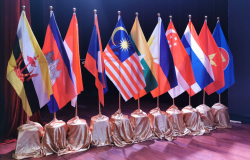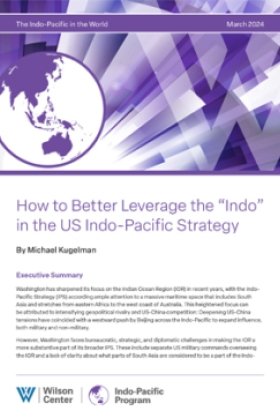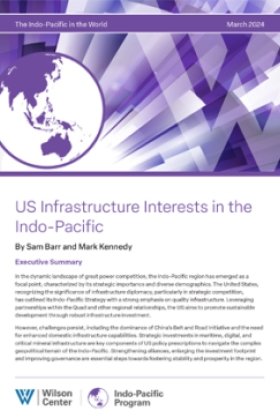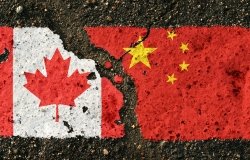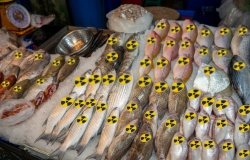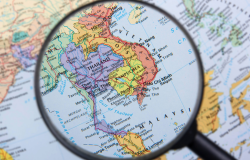Wielding the Double-Edged Sword: The Chinese Experience with Agricultural Genetically Modified Organisms
This research brief was produced as part of the China Environment Forum's partnership with Western Kentucky University on the USAID-supported China Environmental Health Project
Genetic modification of plants represents a new technology that invokes mixed reactions among scientists, policymakers and the general public all over the world, ranging from fervent embracing as the newest agricultural revolution to deep suspicion. Supporters of the technology believe that it is a "silver bullet" that will help solve numerous problems facing today's global agriculture such as the heavy use of agro-chemicals (herbicides and pesticides), the threat of water shortage, and even malnutrition. Critics, on the contrary, focus on the uncertainties surrounding the technology, including its long-term ecological impacts and the effects on human health.
Because of its growing contribution to global food trade, China's position on genetically modified organisms (GMOs) is of global significance. As James Keeley, a long-time observer of the country's GMO projects has noted,
"China's commitment to go on with GM is key to the international battle being fought between corporations and their associated international government and science biotech policy networks, and coalitions of actors concerned at the potential consequences of a hasty rush to GM in terms of consolidation of the agro-food industry, marginalization of poor farmers, or erosion of biodiversity and negative wider ecological change."[1]
Given the heat of this global debate, China's experience with the technology is marked by a combination of strategic commitment and pragmatism. While developing the largest biotechnology capacity outside North America, China is at the same time also trying to address concerns over biosafety, environment, and food safety.[2]
China's engagement in the field of agricultural GMOs started in the 1980s, after several prominent scientists persuaded Deng Xiaoping that biotechnology would be an area of strategic scientific importance that China could not afford to miss.[3] Since then, the country has made tremendous progress in GMO research and development (R&D). China was the first country to commercialize a GMO crop—a virus-resistant tobacco—in 1988.[4] By 2005, China had invested a total of 500 million dollars into R&D of GMOs, which was the largest public expenditure on GMO R&D in the world and amounted to one-fourth of the global public expenditure in this field.[5] According to the International Service for the Acquisition of Agro-biotech Applications, in 2007 there were 3.8 million hectares (ha) of GM crops grown in China (mostly Bt cotton, a cotton genetically modified to be resistant to the pest bollworm), placing the country as the world's 6th largest GM crop grower, right behind India (6.2 million ha. of GM cotton).[6]Besides GM cotton, China's Ministry of Agriculture also has approved the commercialization of other GM plants including tomato, petunia, papaya, and sweet pepper. However, the application of these plants is much more limited in comparison with GM cotton.[7]There are also a number of GM crops in different stages of field trial, including rice, maize, rapeseed, and wheat.[8] On the import side, China has opened the gate for GM soybeans and GM maize mainly from the United States, Argentina, and Brazil—although these products are used primarily to produce oil and animal feed, respectively.[9]
It should be noted that to date no major GM food crops have been approved in China for commercial production. For some observers, this demonstrates the dilemma that faces Chinese policymakers on this issue.[10] While rapidly developing its biotechnology capacity, China is more prudent in terms of commercializing its GM products. For a number of years, Chinese researchers widely believed that GM rice would be next in the pipeline for commercialization,[11] but it failed in both 2004 and 2008 to obtain the green light from the Ministry of Agriculture (MOA) due to concerns over ecological risks and food safety.[12]
GMO AS AN ENVIRONMENTAL AND HEALTH ISSUE
GM crops present both tremendous promises and deep uncertainties. One of the key promises of GM crops is their potential environmental and health benefits, especially in relation to pesticide use and the associated adverse health impact on farmers (See CEHP Research Brief on Pesticides in China). An influential study carried out jointly by Chinese and U.S. researchers found that two kinds of insect-resistant GM rice (with the Bt and CpTI gene) reduced farm-level pesticide use by 80 percent in preproduction field trials carried out in Hubei and Fujian provinces.[13]Consequently, there is a significant reduction in the expenditure on pesticides, with farmers growing GM rice spending less than one-seventh of the amount spent by non-adopters in the study. The health implication of the reduction in pesticide use is demonstrated by the finding that farmers growing only GM rice in the field trial reported no incident of adverse health effect. Similar results are to be found in the study of GM cotton in China.
A 2002 multi-year study of Bt cotton growth around the Yellow River Basin found that the introduction of the GM cotton reduced pesticide use by 24 to 63 kg per hectare in Henan and Anhui provinces.[14]According to the study's authors, this reduction has significant health implications for Chinese cotton farmers who "typically do not use any protective clothing" when applying pesticides. In 1999, 2000, and 2001, respectively, 22%, 29% and 12% of the surveyed farmers growing non-GM cotton in Anhui and Henan reported cases of poisoning, while for those growing only GM cotton reported 5%, 7%, and 8%, respectively.
These findings are not without disputes. In letters responding to the above-mentioned GM rice study, researchers from the International Rice Research Institute (IRRI); Greenpeace; and University of California, Santa Barbara raised questions about the research findings. These questions range from whether the reduction of pesticide use was largely a result of farmer's perception of the GM rice as "anti-pest" rather than its actual effect,[15]whether food safety concerns and long-term ecological effects such as those on non-target species were taken into account,[16]and whether the researchers considered the potential of resistance developed by pests (in the case of Bt rice) and transgene flow from Bt crops, which may increase weed resistance and compromise refuge (part of a GM field dedicated to non-GM crops to prevent resistance) efficacy. [17]The international researchers also raised the point of better alternative solutions such as increasing rice diversity through intercropping in small-scale agriculture, which can significantly reduce plant disease and increase yields while conserving genetic diversity at minimal cost.[18] Similar discrepancies also exist in the assessments of GM cotton. A study conducted by Cornell researchers in China, for instance, raised concern over the rise of secondary pests (pests that are not controlled by the Bt toxin) in the long run that may erode the initial gains from the reduction of pesticide use for the farmers.[19]
GOVERNANCE STRUCTURE OF GMOS IN CHINA
The multifaceted nature of GM technology produces a web of responsibilities that are shared by different agencies governing the development, regulation and monitoring of GMOs in China. The three major government bodies involved are the Ministry of Science and Technology (MOST), the Ministry of Agriculture (MOA) and the Ministry of Environmental Protection (MEP).
Ministry of Science and Technology (MOST)
MOST is mainly responsible for setting the national biotech research agenda and funding GMO R&D activities in China. It was the leading government agency in drafting the National Biotechnology Development Policy Outline (1990) and has been administering the different funding mechanisms for agro-biotech research since the 7th Five-Year Plan (1986-1990).[20]As noted above, China tops the world in terms of public expenditure on GMO R&D activities, with 500 million dollars spent before 2005. Most of this funding comes from MOST through several major programs including the 863 Project, the 973 Plan, and the National Key Laboratory Initiative, among others.
• The 863 Project. This project was started in March 1986 after a group of scientists convinced Deng Xiaoping of the strategic importance of science and technology. It is the most important source of funding for agro-biotech research, which is one of the seven key research fields that the 863 Project promotes. For the 10th Five-Year Plan, about 20 percent of funding through the 863 Project goes to agro-biotech research, which amounts to 3 billion RMB in total.[21]
• The 973 Plan. This plan, initiated in March 1997 focusing mainly on basic science, is considered a complementary project to the 863 Project which emphasizes applied research. Life science constitutes a key part of the 973 Plan, which commands 2.5 billion Yuan in total (1997-2002). [22]
• National Key Laboratory Initiative. There are 30 National Key Laboratories (NKL) supported by MOST, among which 12 work exclusively on biotechnology. Besides the 863 and 973 projects, the NKLs also enjoy special funding provided by MOST and the Ministry of Finance to research GM technologies. [23]
More recently, MOST has also initiated other smaller programs such as the Special Foundation of Transgenic Plants Research and Commercialization (SFTPRC), which aims to support the commercial application of biotechnology. Research institutes must join with a commercial company to be eligible for the funding. [24]
Ministry of Agriculture (MOA)
While MOST develops the national biotech blueprint and provides financial support, MOA acts more as the daily caretaker of the country's biotech projects, overseeing the development and production of GMOs in China. Research institutes associated with MOA are major beneficiaries of the large public funding provided for agro-biotech research. The Chinese Academy of Agricultural Sciences (CAAS), for example, conducts GMO research with its 12 institutes, 2 NKLs, and 5 Key Ministerial Laboratories. [25]The Biotechnology Research Institute under CAAS made major contributions to the development of China's GM cotton (Bt cotton) and rice (a disease-resistant GM rice).
Another important role played by MOA is the regulation of GMO production in China. MOA is responsible for the implementation of the country's GMO regulatory framework, consisting of one overarching regulation (promulgated by the State Council in 2001): Regulation on the Management of Agricultural GMO Biosafety (nongye zhuanjiyin shengwu anquan guanli tiaoli) and four implementation measures including:
- Measures on the Safety Assessment of Agricultural GMOs (2002)
- Measures on the Labeling of Agricultural GMOs (2002)
- Measures on the Import Safety of Agricultural GMOs (2002)
- Measures on the Processing of Agricultural GMOs (2006) [26]
Any GMOs intended for field trial, commercial production or import need to obtain approval from MOA. The Agricultural GMO Biosafety Office (AGBO) under MOA is responsible for coordinating the approval of GMOs in China. [27]The National Agricultural GMO Biosafety Committee (NAGBC), an advisory group of scientists convened by the MOA, is responsible for assessing the applications for GMO field trials, commercial production, and import.[28]The committee meets twice every year to review applications from all over the country and form recommendations for MOA.[29] MOA will then decide whether to grant approval to these applications.
Since 2002, GMOs approved to be sold on the market are also required to be labeled as such, under the provisions of the Measures on the Labeling of Agricultural GMOs. MOA and the agricultural bureaus above the county level are responsible for the oversight of GMO labeling in the domestic market. It should be noted that the current GMO labeling rule only covers non-processed and half-processed products such as seeds and oil. Processed food products containing GMOs, such as biscuits and ice cream, are currently exempted from the labeling rule, though this might be changed. [30] The Administration of Quality Supervision, Inspection and Quarantine (AQSIQ) is charged with the responsibility of ensuring proper labeling for imported products at the border. Facilities processing GMOs into end products are also required to obtain certificates from the provincial agricultural bureaus and follow proper management processes under the provision of the Measures on the Processing of Agricultural GMOs. [31]
Ministry of Environmental Protection (MEP)
The role of MEP in China's GMO regulatory framework is mainly to serve as the contact point for international cooperation on this issue. It is the national agency responsible for implementing the Convention on Biological Diversity (CBD) and is the official focal point for the Cartagena Protocol on Biosafety (CPB), an international treaty under the framework of the CBD to regulate the trans-boundary movement of GMOs, which China formally ratified in 2005.MEP plays a leading role in the negotiation of CPB and is responsible for running the National Biosafety Clearinghouse, as part of the obligation under this biosafety protocol. [32] Aside from this role in negotiation, MEP "has little input into the design of biosafety regulations, or decision-making processes in relation to particular GM product applications," as noted by a close observer of the regulatory process. [33]
Besides the three major ministries, other government bodies also share some of the responsibilities in regulating GMOs in China. As mentioned above, AQSIQ oversees the import and export of GMOs. The Ministry of Health is responsible for conducting food safety assessments for GMOs, which will feed into the approval process under MOA.
DIFFERENT REACTIONS TO CHINA'S GMO POLICY
China's GMO policy remains somewhat unclear—reflecting inter-ministerial tensions, with MOST pushing to commercialize GMO rice while MOA is more hesitant. Chinese biotechnologists and the biotech industry have long complained that the current approval process and regulatory regime are too restrictive for the development of GMOs in China.[34] In 2004, sixteen Chinese scientists and economists submitted a report to the State Council ("Suggestions on the Strategy for GMO Research and Commercialization in China," guanyu woguo zhuanjiyin zuowu yanjiu he chanyehua fazhan celue de jianyi), trying to lobby the government to loosen some of its regulatory controls over GMOs.[35] The scientists noted that although the country has spent billions in GMO research, it had not approved a single case for commercialization since 1999, which indicated an "unclear policy direction." They also raised the concern that the current regulations are too strict and the approval process too long, which "restricts the development of GMOs in China." On the other hand, critics of the regulatory system point out that decision-making on GMOs is often opaque and only admits a limited range of criteria and issues. James Keeley has noted that "Civil society, producer or consumer perspectives and engagement with policy and risk debates in this respect play a far less significant role than they do in other developing countries." [36] For example, the NAGBC, which is the advisory group consisting of more than 50 scientists responsible for the assessment of GMO applications, is dominated by biotechnologists with only 10 or so ecologists and no public or civil society members in it. [37] Ecologists and civil society actors often advocate for a more "balanced" makeup of the committee.Notably, consumer and civil society voices, though often not reflected in official regulatory regimes, are emerging in the more public spheres such as mass media. The 2003 case of a Shanghai consumer suing food giant Nestle for not labeling GM ingredients in its product received widespread media attention in China.[38] In addition, Greenpeace China has been vocal in raising concerns over the ecological and health risks of GMOs. In recent years, it has published consumer guides for GM food, investigated illegal sales of unapproved GM rice and released ecological assessments of GM crops in cooperation with Chinese scientists.[39] The campaign has led to changes in food companies' ingredient policy (Kraft Foods, for example, announced in 2005 that as of 2007 all its products sold in China will not contain GMOs).[40] It has also prompted a government crackdown on illegally grown GM rice in Hubei Province. [41]
Reactions from other countries and regions are also highly mixed. While GMO exporting countries such as the U.S. and Argentina are selling a large amount of GMOs to China every year, the countries' other trading partners such as the EU and Japan are not open to GMOs entering their markets. In 2006, when EU and Japanese authorities detected an unapproved GM rice (Bt63) in food products exported from China, both intensified their inspection of Chinese food products and began requiring measures ranging from mandatory testing to the requirement of third-party certification. EU food safety officials also communicated their concerns over the GM rice issue directly to their Chinese counterparts on different occasions.[42] In February 2008, the EU Commission further tightened its control over the Chinese GM rice, allowing only products indicated in a special list to be imported. All these products also need to obtain a compulsory certification. EU's Health Commissioner Markos Kyprianou was quoted as saying: "Under EU food safety legislation, only GMOs, which have undergone a thorough scientific assessment and authorization procedure, may be put on the EU market. The decision adopted today aims to prevent the unauthorized Bt63 rice from reaching EU consumers, by ensuring that only rice products certified as free from this GMO enter the EU."[43]
Amid the polarized debate, there are indications that China is adjusting its GMO policy recently. In the 11th Five-Year Plan for Bio-Industry Development released by the National Development and Reform Commission (NDRC), among 16 key projects that the country will pursue a 20 billion Yuan budget has been allocated for the breeding of new GMO varieties. According to a leading scientist and former SEPA official who long has been engaged in China's GMO policy under this program, "the annual expenditure on GMO research will exceed the total amount for the last years." [44] In addition, in the summer of 2008 China's MOA finished a comment-soliciting process for the amendment to the Regulation on the Management of Agricultural GMO Biosafety, which might lead to the simplifying of some of the approval processes for GMOs. If Chinese policymakers chose to wholeheartedly commercialize GMOs—e.g., committing themselves to the biotech sword—it could play a major role in pushing the domestic and global markets of GMOs, as well as spark a stronger global debate.
Ma Tianjie is a summer 2008 research intern at Woodrow Wilson Center's China Environment Forum. He is currently pursuing a master degree in Global Environmental Policy at American University, Washington D.C. Before coming to the U.S, he worked for Greenpeace China on food and agricultural issues including GMOs and pesticide use in China. He can be reached at: tm2198a@american.edu.
1 Keeley, James. (2003). Regulating Biotechnology in China: the Politics of Biosafety (Working Paper No.208). Sussex: Institute of Development Studies, 3.
2 Huang, Jikun. (2003). Biotechnology Policy and Regulation in China ( Working Paper No. 195). Sussex: Institute of Development Studies, 1
3 Keeley, James. (2003). The Biotech Developmental State? Investigating the Chinese Gene Revolution (Working Paper No. 207) Sussex: Institute of Development Studies, 13
4 Keeley, James. (2003). The Biotech Developmental State? Investigating the Chinese Gene Revolution ( Working Paper No. 207). Sussex: Institute of Development Studies, 6
5 Ibid.
6 James, Clive. (2007). "Global Status of Commercialized Biotech/GM Crops: 2007," ISAAA, 7. Available. Online.
7 Production figures for these plants has little effect on the total amount of GM crops grown in China. The ISAAA report indicates that China's total 2007 GM crop cultivation amounts to 3.8 hectares, while the figure for GM cotton alone was 3.8 millions. This indicates that other GM crops are either not grown at all (though authorized), or are grown on a very small basis, such as GM papaya, which only accounts for 3500 hectares.
8 James, Clive. (2007). "Global Status of Commercialized Biotech/GM Crops: 2007," ISAAA, 7. Available. Online.
9 Runckle and Associates, "Biotechnology in China: Agriculture and Biotechnology," Available. Online.
10 Huang, Jikun et la. (2003, April). "Economic Impacts of Genetically Modified Crops in China," paper presented at the 25th International Conference of Agricultural Economists (IAAE), Durban, South Africa, 1.
11 Jia, Hepeng. (2005, Jan 27). "GM Rice May Soon be Commercialized," China Daily.
12 Deng, Li. (2008, Jul 10). "China Cautious Towards GM Rice Commercialization,"(zhongguo jinshen duidai zhuanjiyin shuidao shangyehua) 21st Century Economic News. (Text in Chinese)
13 Huang, Jikun, Ruifa Hu, Scott Rozelle and Carl Pray. (2005). "Insect-Resistant GM Rice in Farmers' Fields: Assessing Productivity and Health Effects in China," Science, 308 (5722), 688-690.
14 Pray, Carl, Jikun Huang, Ruifa Hu & Scott Rozelle. (2002). "Five Years of Bt Cotton in China: The Benefits Continue,"The Plant Journal, 31(4), 423-430.
15 Heong, K.L. et la. (2005). "Debate over a GM Rice Trial in China," Science, 310 (5746), 231 – 233.
16 Sze, Pang Cheung and Janet Cotter. (2005) "Debate over a GM Rice Trial in China," Science, 310(5746), 231 – 233.
17 Cleveland, David and Daniela Soleri. (2005). "Debate over a GM Rice Trial in China," Science, 310(5746), 231 – 233.
18 Ibid.
19 Wang, Shenghui, David Just and Per Pinstrup-Anderson. (2006, July). "Tarnishing Silver Bullets: Bt Technology Adoption, Bounded Rationality and the Outbreak of Secondary Pest Infestations in China," Selected Paper prepared for presentation at the American Agricultural Economics Association Annual Meeting Long Beach, CA.
20 Huang, Jikun. (2003). Biotechnology Policy and Regulation in China (Working Paper No.195). Sussex: Institute of Development Studies, 3
21 Keeley, James. (2003). The Biotech Developmental State? Investigating the Chinese Gene Revolution (Working Paper No. 207) Sussex: Institute of Development Studies, 13
22 Huang, Jikun. (2003). Biotechnology Policy and Regulation in Chinac(Working Paper No.195). Sussex: Institute of Development Studies, 5.
23"China Establishes Special Fund for NKLs," (2008, May 4). Xinhua. Available. Online.
24 Huang, Jikun. (2003). Biotechnology Policy and Regulation in China (Working Paper 195)Sussex: Institute of Development Studies, 5.
25 Huang, Jikun. (2003). Biotechnology Policy and Regulation in China (Working Paper 195) Sussex: Institute of Development Studies, 6.
26 [Online]All available at: "MOA Biosafety Site"
27 Article 5, "Measures on the Safety Assessment of Agricultural GMOs"
28 Article 5, "Measures on the Safety Assessment of Agricultural GMOs"
29 Article 16, "Measures on the Safety Assessment of Agricultural GMOs"
30 See Appendix of the Measures on the Labeling of Agricultural GMOs.
31 [Online] Available at:"GOV.cn"
32National Biosafety Clearinghouse of China
33 Keeley, James. (2003) Regulating Biotechnology in China: the Politics of Biosafety (Working Paper No.208) Sussex: Institute of Development Studies, 8.
34 Huang, Jikun. (2003) Biotechnology Policy and Regulation in China (Working Paper No.195) Sussex: Institute of Development Studies, 1.
35 Zhang, Qifa et la. (2004) "Suggestions on the Strategy for GMO Research and Commercialization in China (guanyu woguo zhuanjiyin zuowu yanjiu he chanyehua fazhan celue de jianyi)," Available. Online.
36 Keeley, James. (2003). Regulating Biotechnology in China: the Politics of Biosafety (Working Paper No. 208) Sussex: Institute of Development Studies, 6.
37 Ibid.
38 Shi Xin, (2003, Dec 25)."Zhu Yanling: I Sued Nestle," Southern Weekend . Available. Online.
39 [Online]. Greenpeace China Website
40"Kraft Foods: Products Will Not Use GMOs after 2007," (2005 Dec 21)Xinhua. Available. Online.
41"Hubei Province React to the ‘Illegal GM Rice Incident'." (2005, Aug 10)China Grain Information Network. Available. Online.
42"Illegal Rice Bt63 from China Contaminates Food Products," GM Contamination Register. Available. Online.
"Unauthorised 'Bt63' genetic modification in rice and rice products from China,"(2008, April) Food Standard Authority UK . Available. Online.
43"Commission requires certification for Chinese rice products to stop unauthorized GMO from entering the EU,"(2008, Feb 13)EU Commission News Release . Available. Online.
44 Email Interview, July 26, 2008
45 Yu, Dawei. (2008, Jun 25). "GM Rice Commercialization Accelerated," Caijing Magazine.
About the Author
Ma Tianjie
Read More
China Environment Forum
Since 1997, the China Environment Forum's mission has been to forge US-China cooperation on energy, environment, and sustainable development challenges. We play a unique nonpartisan role in creating multi-stakeholder dialogues around these issues. Read more

